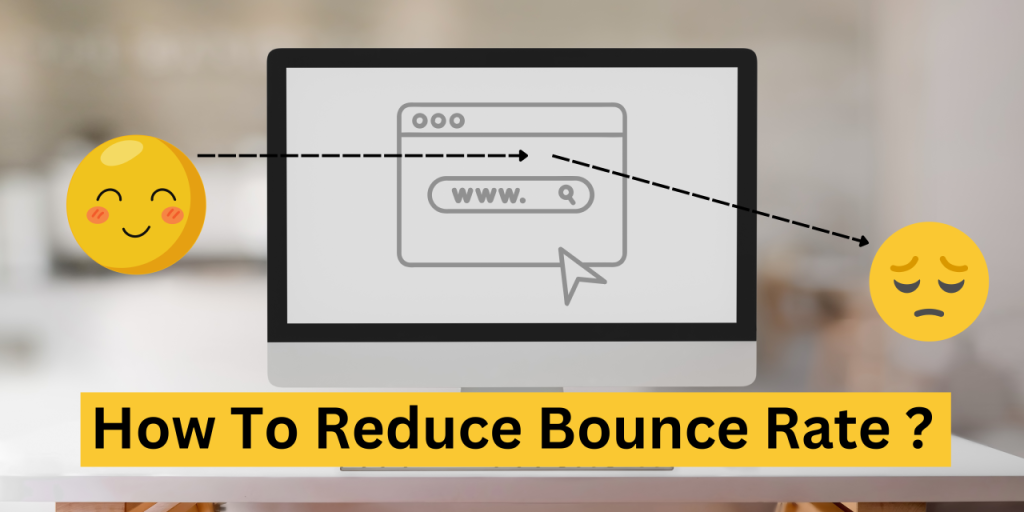
In the world of Search Engine Marketing (SEM), the challenge of reducing bounce rates on landing pages looms large. How to reduce bounce rates effectively becomes the pivotal question. This guide explores actionable strategies marrying website analysis with on-page SEO techniques to address this concern. From analyzing user behavior to optimizing content quality and refining CTAs, we unveil a comprehensive approach aimed at enhancing user engagement and driving conversions. Join us as we unravel the secrets of SEM optimization and unlock the path to digital success.
How to Reduce Bounce Rates?
Bounce rate refers to the percentage of visitors who navigate away from a website after viewing only one page, without interacting further or exploring additional content. It serves as a key metric in assessing the effectiveness of a website or landing page in engaging and retaining visitors. A high bounce rate typically indicates that visitors are not finding what they expected or desired upon arrival, potentially signaling issues with relevance, usability, or content quality.
Reducing bounce rate is crucial as it directly correlates with user satisfaction, conversion rates, and overall website performance. By optimizing landing pages to encourage deeper engagement, businesses can enhance user experience, increase conversion opportunities, and ultimately improve the effectiveness of their online presence. Here’s a step-by-step guide on how to reduce bounce rate for landing pages effectively:
- Identify High Bounce Rate Landing Pages: Begin by using analytics tools like Google Analytics to identify which landing pages have high bounce rates. Focus on pages that are critical to your SEM campaigns, such as those linked to specific ads or keywords.
- Analyze User Behavior: Dive deep into the analytics data to understand user behavior on these landing pages. Look for patterns such as the source of traffic, demographics, device types, and the time spent on the page before bouncing. This information can help you pinpoint the underlying reasons for the high bounce rate.
- Assess Relevance and Alignment: Evaluate the alignment between your SEM campaigns (ad copy, keywords) and the content of the landing pages. Ensure that the messaging, offers, and information on the landing pages are closely aligned with the user’s search intent and expectations set by the ad.
- Optimize Page Load Speed: Slow-loading pages can significantly contribute to high bounce rates. Use tools like Google PageSpeed Insights to identify speed issues and optimize your landing pages for faster load times. This may involve compressing images, minifying CSS/JavaScript files, and leveraging browser caching.
- Improve Content Quality: Evaluate the quality and relevance of the content on your landing pages. Make sure the content is engaging, informative, and easy to consume. Use clear headlines, bullet points, and compelling visuals to keep visitors interested and encourage them to explore further.
- Optimize Call-to-Action (CTA): Review the effectiveness of your CTAs on the landing pages. Ensure that they are prominent, relevant, and compelling. Experiment with different placement, colors, and wording to encourage visitors to take the desired action, whether it’s making a purchase, filling out a form, or exploring other pages on your site.
- Enhance User Experience (UX): Evaluate the overall user experience of your landing pages. Ensure that they are mobile-friendly, easy to navigate, and free of distracting elements. Simplify forms and minimize the number of steps required to complete the desired action.
- Implement A/B Testing: Experiment with different variations of your landing pages to see what resonates best with your audience. Test different headlines, layouts, CTAs, and content to identify the most effective combinations. A/B testing can provide valuable insights into what changes can help reduce bounce rates.
- Monitor and Iterate: Continuously monitor the performance of your landing pages and SEM campaigns. Track changes in bounce rates, conversion rates, and other relevant metrics over time. Use this data to iterate and refine your strategies to further optimize performance.
By implementing the strategies outlined in this guide, from thorough website analysis to meticulous on-page SEO tactics, businesses can effectively engage users and steer them towards desired actions. Remember, optimizing landing pages is an ongoing process that demands continuous monitoring, testing, and refinement.
As you navigate the dynamic landscape of digital marketing, keep the principles of user-centricity and data-driven decision-making at the forefront. With dedication and strategic implementation, the question of how to reduce bounce rate evolves from a challenge to an opportunity for growth and conversion optimization in the ever-evolving world of SEM.

Leave a comment